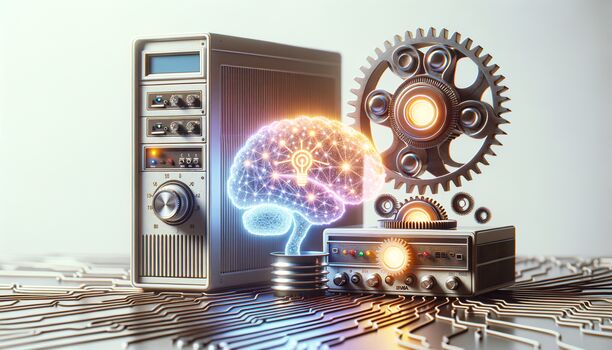


Letztes Update: 14. September 2025
Integrating AI into legacy systems can enhance their capabilities, making them more efficient. Learn the best practices to ensure a smooth transition and optimal performance.
Hi everyone, I'm curious about integrating AI into legacy systems. From my experience, I know that introducing new technologies into older infrastructures can be quite challenging. However, I believe that AI can significantly enhance the capabilities of these systems, making them more efficient and effective. What are the best practices for implementing AI in legacy systems to ensure a smooth transition and optimal performance? Any insights or experiences shared would be greatly appreciated.
Last updated 3 mins ago
Antwort der Redaktion
Integrating AI into legacy systems can indeed be a daunting task, but with the right approach, it can lead to significant improvements in efficiency and effectiveness. Here are some best practices to ensure a smooth transition and optimal performance.
Before you start integrating AI, it's crucial to have a deep understanding of your existing legacy systems. Analyze their architecture, data flow, and limitations. This knowledge will help you identify the areas where AI can add the most value and foresee potential challenges.
Set clear, achievable goals for what you want to accomplish by integrating AI into your legacy systems. Whether it's improving data processing speed, enhancing decision-making, or automating routine tasks, having well-defined objectives will guide your implementation strategy.
Not all AI tools are suitable for legacy systems. Select tools that are compatible with your existing infrastructure and can be easily integrated. Consider factors like scalability, ease of use, and support for your specific industry needs.
Ensuring compatibility between AI solutions and legacy systems is critical. Use middleware or APIs to facilitate communication between new AI technologies and older systems. This approach helps bridge the gap and allows for a seamless integration process.
AI systems rely heavily on data, so it's essential to ensure that your legacy systems provide high-quality, clean data. Implement data cleansing processes and establish protocols for continuous data quality monitoring to enhance AI performance.
Before a full-scale implementation, test AI solutions with pilot projects. This allows you to assess the impact, identify potential issues, and make necessary adjustments without disrupting the entire system.
Equip your team with the necessary skills to work with AI technologies. Provide training sessions and resources to help them understand how AI can be leveraged within your legacy systems. A knowledgeable team is crucial for successful implementation and ongoing management.
By following these best practices, you can effectively integrate AI into legacy systems, ensuring a smooth transition and unlocking new capabilities for your organization.
Last updated 3 mins ago
Integrating AI into legacy systems can be a complex but rewarding endeavor. When you're working to bring new technology into established systems, understanding the best practices for implementing AI in legacy systems is crucial. It's about more than just injecting modern tech; it's a careful blend of respecting the past while embracing the future. This process ensures that your system remains robust, efficient, and ahead of the curve.
As technology evolves, so too does the programming landscape. For those looking to future-proof their systems, delving into the most promising programming languages for future software development is essential. These languages offer new paradigms and efficiencies, particularly in AI development. They could be the key to unlocking even more potential in your legacy systems, ensuring they stay relevant in a rapidly changing digital world.
Moreover, the integration of cutting-edge technologies like blockchain can offer legacy systems a new lease on life. Learning how to effectively integrate blockchain technology into existing financial applications can provide unparalleled security and efficiency. This integration is not just about keeping up with trends; it's about setting your systems up for future success, making them more secure, transparent, and efficient in the process.
Each step towards modernizing legacy systems with AI and other technologies is a step towards future-proofing your business. By focusing on the best practices, exploring new programming languages, and integrating technologies like blockchain, you're ensuring that your systems not only survive but thrive in the digital age.